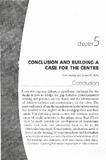| dc.description.abstract | From the ongoing debate, a significant challenge for the
media is how to bridge the gap between communication
training and practice, on one hand, and the advancement
of African societies and communities, on the other. The
preponderance of media organisations in the urban centres
has resulted in the neglect of the rural opulace and their
needs. The prevailing media system will continue to drive
most of media activities to the urban areas, thus efforts
must be made towards the development of community
media that does not necessarily have to be in the
vernacular languages. Consequently, institutions need to
focus on the training of correspondents and journalists
who reside in areas outside the cities where almost allof
the training on communication and media takes place.
Distartce learning becomes important in this context,
to offer an environment that is flexible to correspondents, within
the demands of their work and social responsibilities. In addition,
institutions need to address the issue of training in areas that are not
traditionally viewed as journalistic. Areas such as Film, for example,
offer untapped, but immense opportunities for growth and cultural
development. Another such area is development communication
and journalism. | en_US |

